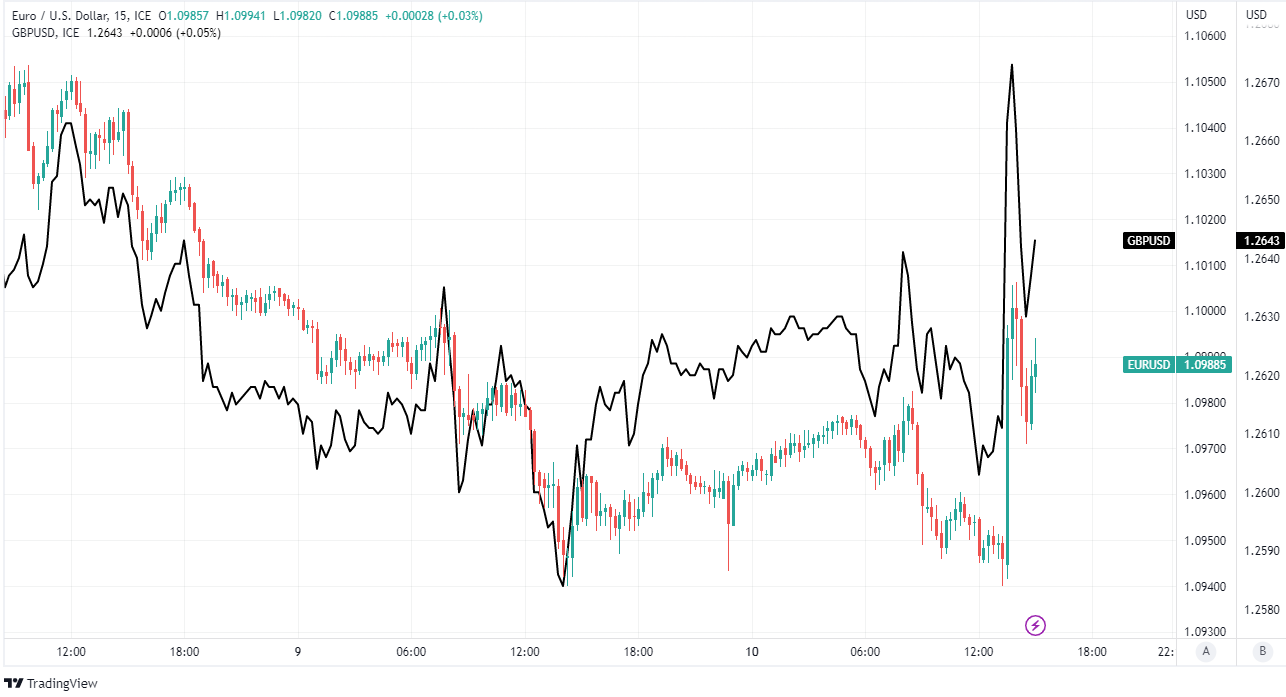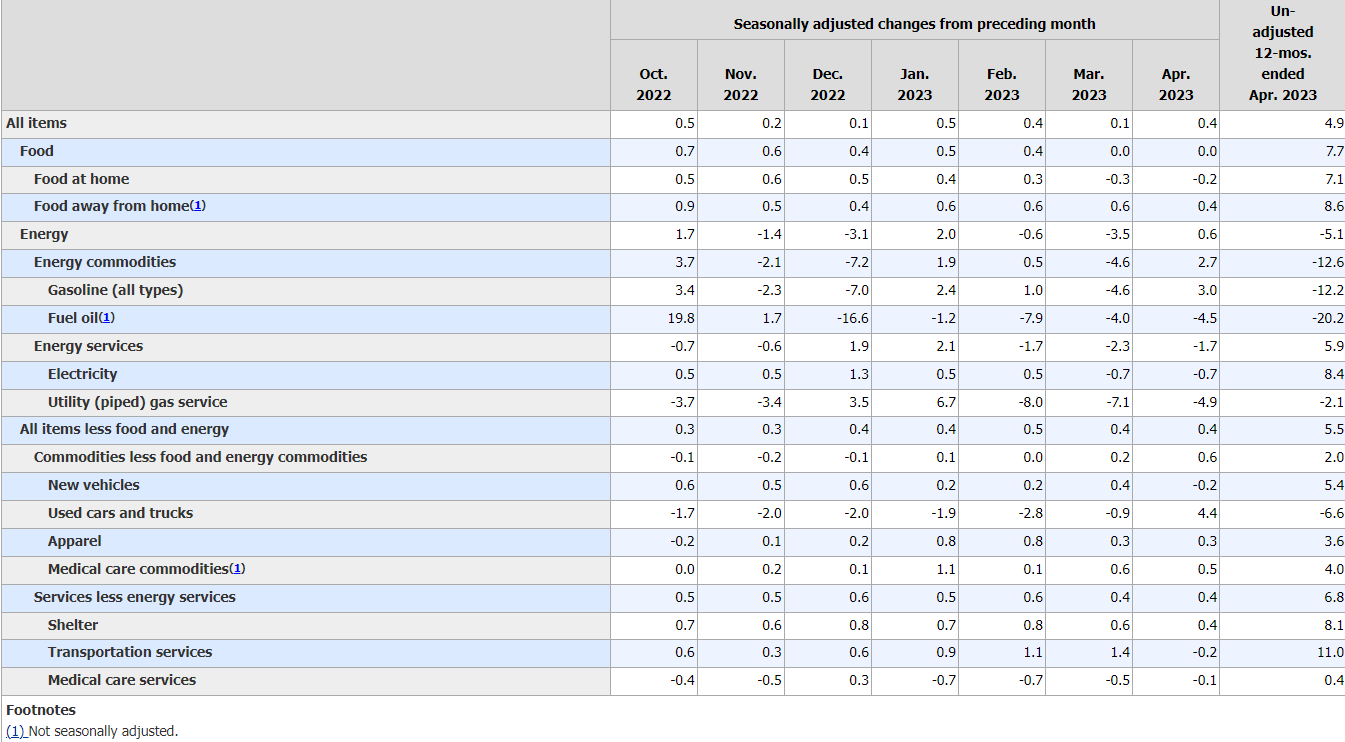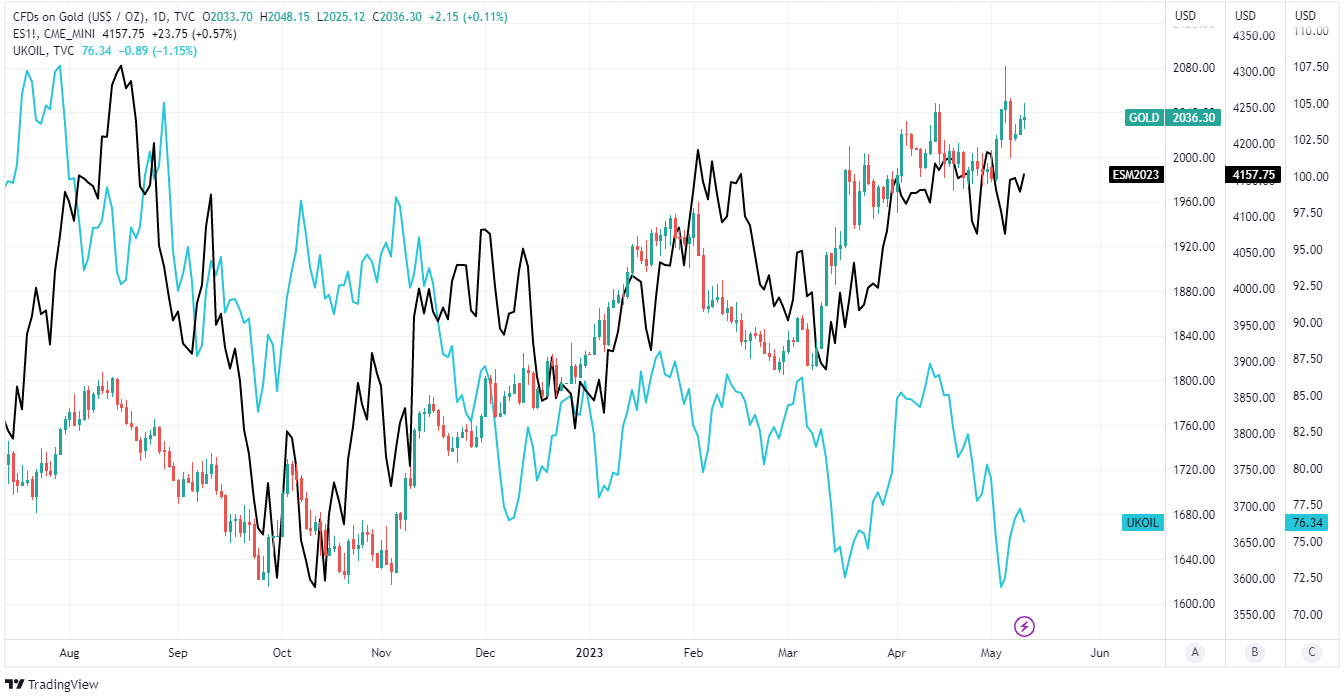EUR/USD Rate Rallies as Inflation Victory Looms for Federal Reserve
"The gold rallies on the convulsions of regional credit institutions were more about a liquidity crisis, and gradually capital may flow back into dollar-denominated debt assets, which are currently offering impressive yields" - FxPro.

Image © Adobe Stock
The Euro to Dollar exchange rate rallied in midweek trade after official figures revealed another tick lower in the annual measure of price growth but also a much more importantly meaningful glimpse of victory for the Federal Reserve (Fed) in its effort to contain the inflation demon.
Europe's single currency reversed earlier losses to reapproach the 1.10 level against the Dollar after the Bureau of Labor Statistics said U.S. inflation ticked lower from 5% to 4.9% in April after a 0.4% increase that month.
The monthly change was in line with the consensus among economists while the annual decline came in a tick lower than the average of professional forecasts but much more important were the developments relating to core inflation.
This rose 0.4% for a second time running after the estimate for March was revised higher from 0.3% to 0.4% while in annual terms the core rate matched economist expectations by falling from 5.6% to 5.5% last month.
"Today’s data was in line with expectations and does not change our view that the Fed has now paused its interest rate hikes, but the still hot pace in core inflation also reaffirms that rate cuts are not in the cards for this year," says Karyne Charbonneau, an economist at CIBC Capital Markets.
 Above: Euro to Dollar rate shown at 15-minute intervals.
Above: Euro to Dollar rate shown at 15-minute intervals.
Core inflation excludes volatile food and energy items from the basket of goods for which prices are measured in order to provide a clearer picture of how the domestic economy is or isn't driving the more persistent forms of inflation that are the main focus of central banks.
At more than twice the level of the Federal Reserve's two percent target, many will argue that this measure of inflation is still too high but it's not clear whether they would or wouldn't have seen how an 8.1% increase in the Shelter Index accounted for "over 60% of the total increase" in core inflation for April.
"Rent inflation is still very high, at 8.3% year-over-year, but this is likely the peak and we expect the rate to halve over the next year, subtracting some 1.7pp from core CPI inflation; rents account for 41% of the index," says Ian Shepherdson, chief economist at Pantheon Macroeconomics.
"This means the equivalent measure in the core PCE deflator, which the Fed is now watching very closely, is set for a third straight relatively benign reading," he adds, citing rent inflation and developments in some other categories.
The significant extent to which rent increases explained core inflation last month is important because they have previously been flagged as a temporary side effect of the Fed's interest rate policy and something members of the Federal Open Market Committee would overlook in setting interest rates.
 Source: Bureau of Labor Statistics.
Source: Bureau of Labor Statistics.
U.S. interest rates were raised to 5.25% last week but at the same time the bank adopted a more balanced view of the outlook when saying further increases in borrowing costs are no longer a foregone conclusion but that cuts to interest rates are unlikely to materialise any time soon.
"The trend appears to be breaking to the downside, and if that continues - as we expect - and the labor market softens, as implied by all the leading indicators, the Fed’s line of no rate cuts this year will soon become indefensible," Shepherdson writes in a review of the data.
With inflation still high for many other countries and currencies including the Euro Area and Euro, it's not clear how much further the Dollar could be expected to fall, though victory for the Fed in its battle with inflation might make a bearish argument for an earlier outperforming gold price.
U.S. Dollar gold prices rose by 10% over the three months to early May and were up more than 15% for the recent six months on Wednesday.
 Above: Gold price shown at daily intervals alongside S&P 500 and Brent Crude oil price.
Above: Gold price shown at daily intervals alongside S&P 500 and Brent Crude oil price.